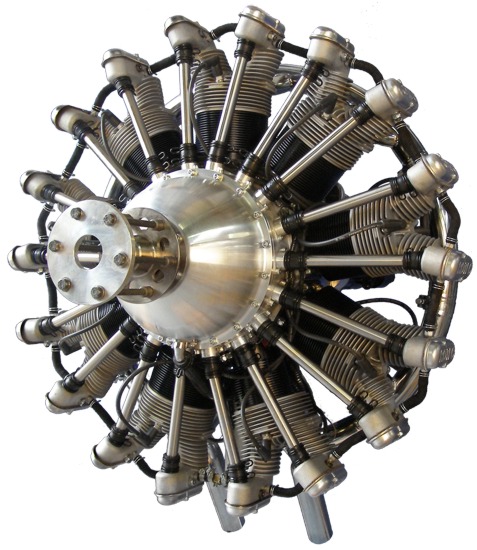Ian's biplane projectPosted May 17, 2016 In late June 2006, I was on the verge of tossing my pilot's license in the garbage. Flying is an expensive hobby, and unless you have a good use for it, it feels pretty frivolous. I was mostly going up and doing touch-n-goes in a Cessna 152, which cost $75 or more each time, and didn't really do anything for me. I wasn't skilled enough to do it really well (because I wasn't willing to pay for the practice time), so it was infrequent, frustrating, and expensive. Great. It came to a breaking point in mid July. I was ready to forget flying for a long time if something interesting didn't show up. I decided I should check out something inexpensive and different in the flying world, so I looked up ultralights. I didn't know if that was the right thing, but I knew ultralights were cheap, and you could even fly them without a license. Quickly, and randomly, I came upon the Loehle Spad XIII, which can be flown as an ultralight or an experimental. "Hmm, what's this experimental thing?" I thought to myself. I did some reading, and ended up where I am now. I'm getting serious about building a biplane, which I figure will be a 5-10 year project with bouts of serious activity, and bouts of serious slack, depending on other priorities. It will involve learning to weld, and a serious concentration on doing everything well, with no slap-dash work. The prospect of a large project requiring constant highest-quality work is very appealing. The historyIn 2006, I set down my thoughts on this project. In 2011, I modified that page with some updates. And now, here in 2016, here we are again. Will it stick this time? Only time will tell. The plane
After changing my mind nearly a dozen times on which model of airplane I'm most interested in, I find myself settling on the Marquart Charger MA-5. This plane was designed in the late 1960s, and most of the flying examples seem to have been built before about 1985, with few if any active builders now. However, the Charger appears to encompass all the attributes I'm looking for in an airplane project:
The Charger plans are public domain after Ed Marquart's death in 2007, so I've had an opportunity to study them with some care, which has been very educational. I've also spent some time studying reported problems online, and the biggest problem the plane seems to have is a slightly underbuilt landing gear, which can be addressed with an extra gusset, and possibly an alternate material for the shock absorber system, which uses rubber "donuts" from the Ercoupe. The Charger is widely described as being a very sweet-flying airplane, generally viceless, without any negative reports that I've been able to find. It seems to be ideal for mild aerobatics such as the occasional loop or roll, but also well set up to fly hands-off, and so up to the odd trip to Orcas Island or other scenic northwest destinations. It might even be capable of (if not comfortable for) longer trips. The Charger is of traditional construction: welded 4130 steel tube fueslage and tail, wooden wings, and fabric covering. Typical empty weight seems to be in the 1000-1100 lb range, with gross weight specified in the plans as 1550 lbs. It carries 35 gallons of fuel in three tanks, and the designer claims 115 mph cruise speed with a 125 HP motor, giving it a range of over 5.5 hours, or about 600 miles. Speed with a more powerful 150 HP motor would probably be a couple MPH higher, with the real difference being increased rate of climb. I believe the frame is stressed for +6 and -4 G, though I don't know if that's official or not. The EngineOne highly interesting choice to power this plane is a Rotec R3600 radial engine (150 HP). The Rotec (unlike in 2006 when I started on this idea) is a comparatively proven design at this point. It's not perfect, with people reporting some problems, but no more than I'd expect of any production engine. Most seem to report being happy with their Rotec. However, I recently stumbled across someone else's analysis that the firewall-forward cost for the Rotec was about $30,500, making it well over doubly expensive as other choices. The other engine I'd seriously consider is a Lycoming O-320 or IO-320 (150-160 HP depending on model), which is a similar weight, produces a similar amount of power, and is half the price; but then the plane ends up looking like every other airplane out there. Appearance matters, particularly if I'm going to go to the trouble of building that second wing. There is one alternative, though. Verner Motors out of the Czech Republic makes the Scarlett 7Si radial, which produces 137 HP, is fuel injected, and also looks quite interesting. Unfortunately, it's a brand new model, so even in 5-6 years when I get to the point of having to pull the trigger on a motor, it won't have much actual flying time to its name. Reliability will be a real question. On the flip side, Verner have been making aircraft motors for many decades, so I'm more inclined to trust a new design of theirs than the new design of a comparative upstart like Rotec. Instruments and AvionicsThis is the minimum set of instruments and avionics I've been thinking I'd want: Flying instruments:
Engine instruments:
Avionics:
Lights:
Other SitesMarquart Charger Facebook Group Reference Photos and InfoList of likely modifications to the Charger Created by Ian Johnston. Questions? Please mail me at reaper at obairlann dot net. |


